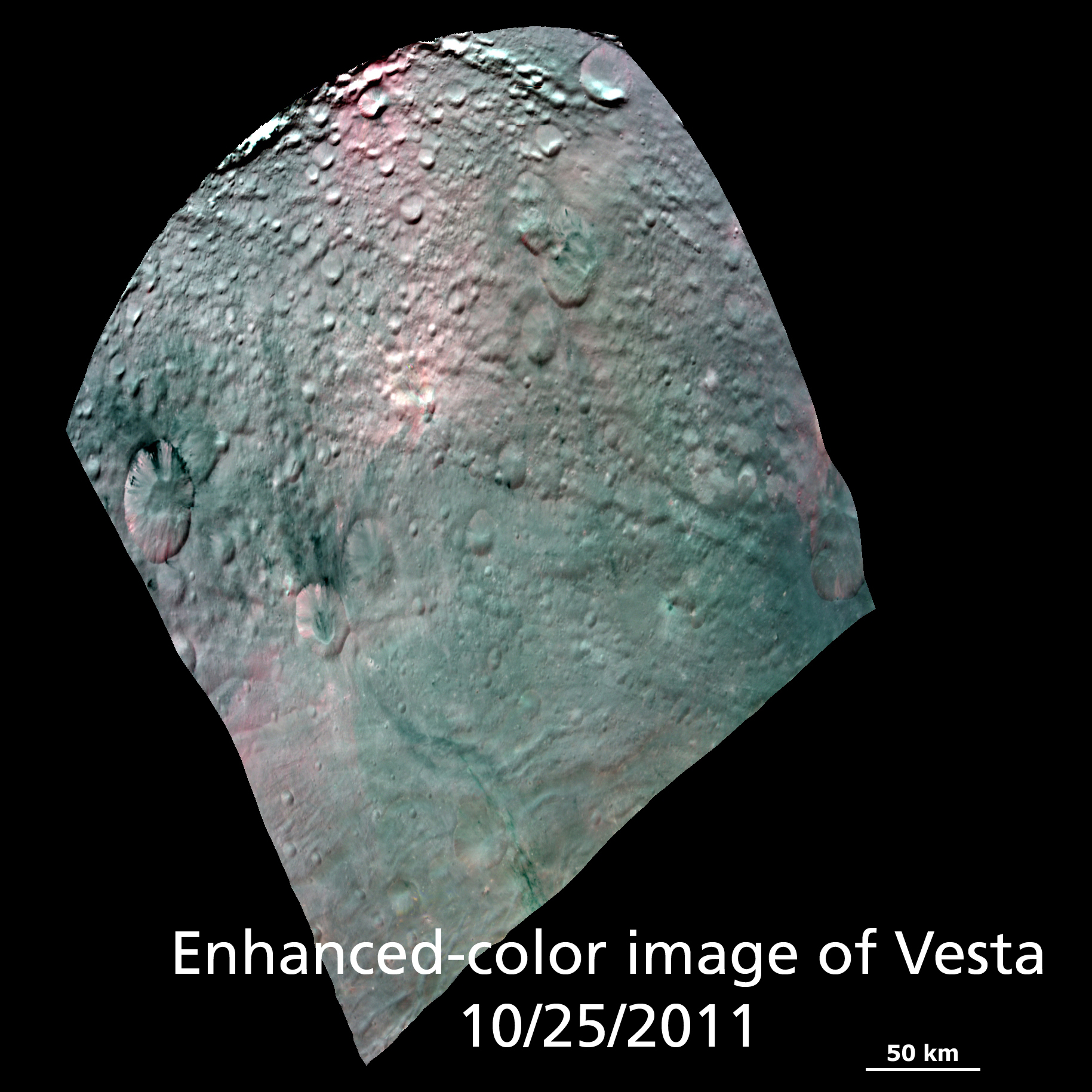As part of the current show (Worlds of Stone [1]) at Pacific Science Center we’re updating the images we show from NASA’s MESSENGER and Dawn missions on a weekly basis. I’ll try to show them to you the week after we use the in the planetarium.
Dawn
NASA Caption [3]
Released October 25, 2011
Date acquired: August 11th 2011
Instrument: Dawn FC (framing camera)
PASADENA, Calif. — This Dawn FC (framing camera) composite images show the spectacular spectral diversity of Vesta’s surface. This image shows a Red-Green-Blue color composite image of Vesta. The images from these 3 filters were combined into this one RGB composite image, which enhances Vesta’s coloration..
Image Credit: NASA/ JPL-Caltech/ UCLA/ MPS/ DLR/ IDA
Alice Says:
In short, this is a false-color image. I’ve chosen one of the two that was originally part of this release. I chose this one because it is what I would call “less false” color. Instead of an image with crazy colors depicting specific minerals, I thought it would be interesting to look at a picture that gives us a bit of a sense of what color Vesta might be rather that the greyscale images we’ve been seeing so far.
MESSENGER
NASA Caption [5]
Released October 23, 2011
Date acquired: October 10, 2011
Instrument: Narrow Angle Camera (NAC) of the Mercury Dual Imaging System (MDIS)
Of Interest: The large crater here was formed by a very low angle, or oblique, impact. Although impacts at most angles produce circular craters, impacts with incidence angles <15º (from the horizontal) will create elliptical craters. This crater is superposed on an older, circular crater.
Alice Says:
NASA’s explanation is good. I picked this image because it’s a great way to engage with the geology of Mercury.
Here’s a teachable moment: ask guests why the crater might have such a strange shape.
And what about that ridge in the middle? Often when you have a peak in the middle of a crater it’s a “splashback” – like those in slow-motion images of milkdrops.
Want More?
Worlds of Stone at Pacific Science Center [1]
MESSENGER [6]
Dawn [7]
![]()
~ A l i c e !

